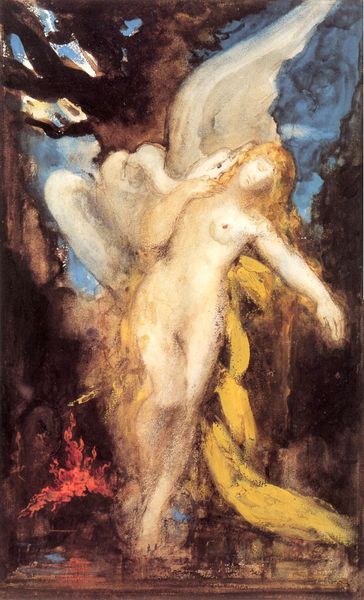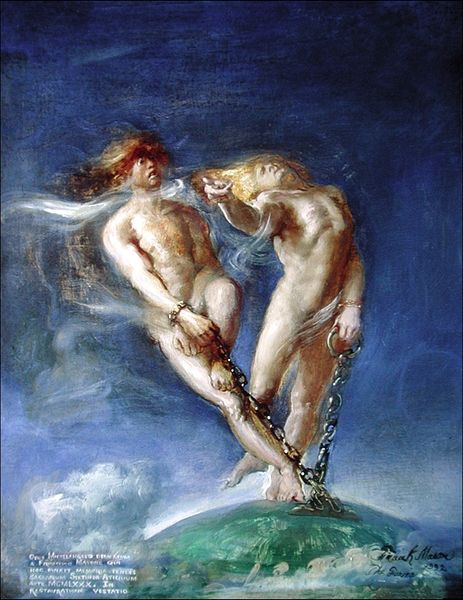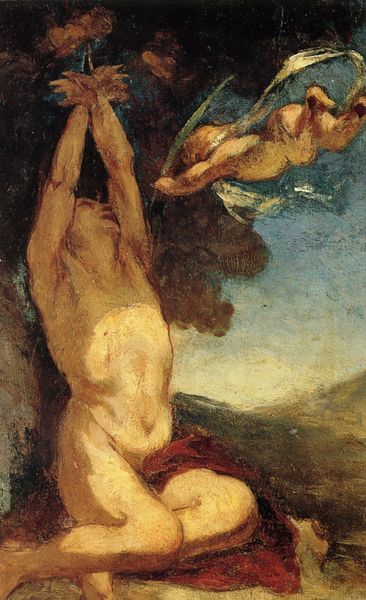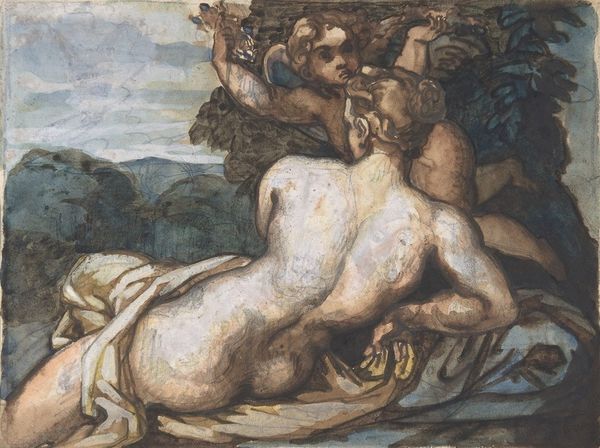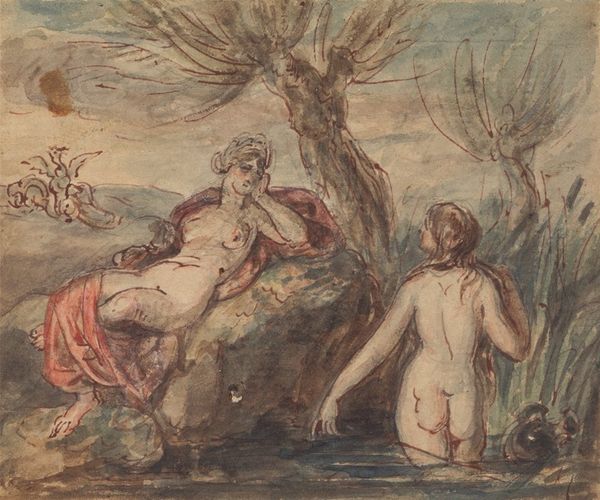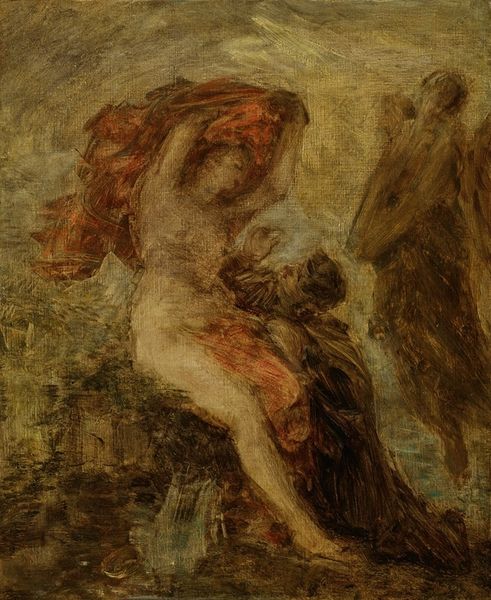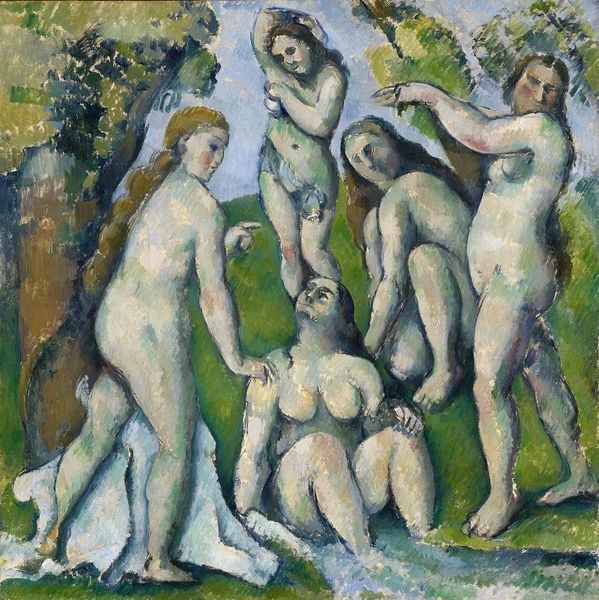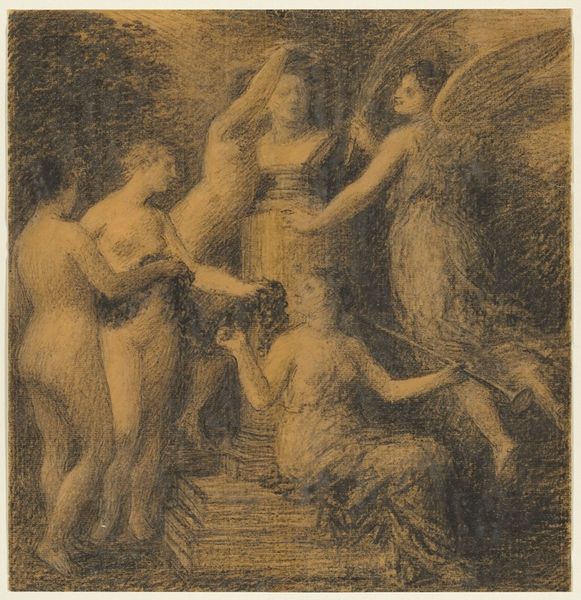
oil-paint
#
allegory
#
baroque
#
oil-paint
#
figuration
#
oil painting
#
history-painting
#
nude
Copyright: Public domain
Curator: Here we see a rendition of "The Three Graces." This work is attributed to Peter Paul Rubens, painted in oils, depicting an allegorical subject drawn from classical mythology. Editor: Right. My immediate thought is that there is a strange beauty, unfinished and a bit frantic, about this sketch. It feels so…alive, you know? Like they’re caught mid-dance, figures full of potential energy! Curator: Yes, the Graces, often considered symbols of charm, beauty, and creativity, are depicted here in a rather dynamic pose. Traditionally, these goddesses represent splendor, mirth, and good cheer, always in a state of giving, receiving, and returning joy. Editor: I like that. It reminds me that joy isn’t a static thing; it flows. And that connection, that little arm-linking gesture in the middle, it's like they're literally holding each other up. But there's also, underneath that swirling motion, this...I don’t know... earthy groundedness. What is your take on the medium? Does the unfinished feeling hint at an unrealized promise? Curator: Interesting thought. The unfinished quality does create a sense of potentiality. The use of oil, with its richness and capacity for layering, hints at the abundance associated with the Graces. And you're right, the brown palette lends this grounding and also a psychological dimension that enhances a reading beyond classical convention. Editor: Mmh, a certain humanness? The color helps ground the picture, in a manner that it is both alive and antique. Also, there is an enigmatic structure or building sitting in the back, what do you think that may point to? Curator: Another great question! In paintings such as this, historical clues, even when seemingly unfinished, may function as windows for looking deeper into the subject and the patron behind the artwork. But with so little information it can be a challenging interpretative endeavor. Editor: Absolutely. I always find these kinds of pieces so compelling—they're not just images, they're questions, invitations to think and feel. It’s kind of fun getting lost in those symbolic landscapes. Curator: I couldn't agree more! Looking at art is an exercise in speculation as much as observation. Art is like a cultural bridge over time. Editor: Very true. That is a great note to end our conversation. Thanks!
Comments
No comments
Be the first to comment and join the conversation on the ultimate creative platform.
